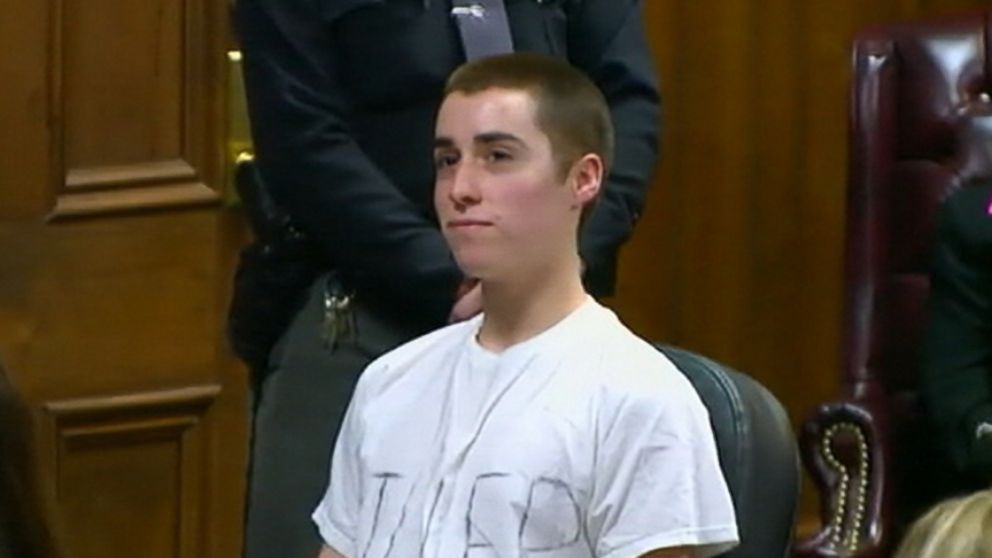Introduction: Brief overview of TJ Lane’s case
The tragic events surrounding TJ Lane have left an indelible mark on the community of Chardon, Ohio. On a seemingly ordinary school day in February 2012, chaos erupted at Chardon High School as Lane opened fire, claiming the lives of three students and injuring others. The aftermath was not only a profound loss for families but also raised crucial questions about mental health, warning signs, and societal responsibility. As we delve into the story behind TJ Lane’s infamous actions, it’s important to explore his early life and what may have contributed to this devastating tragedy. Understanding these factors can help us address similar issues in our communities today.
Early Life and Troubled Childhood
TJ Lane’s early life was marked by instability and turmoil. Born in 1993, he faced challenges from a young age. His family life was fraught with issues that would later shape his identity.
Growing up in a small town, Lane often felt isolated. He struggled to connect with peers and found solace in the wrong places. This lack of support fostered feelings of anger and resentment.
His childhood home environment contributed significantly to his mental state. Reports suggest that he experienced neglect and emotional distress during formative years. These experiences left lasting scars, shaping his worldview.
As Lane navigated adolescence, signs of deeper psychological issues began to emerge. Troubled relationships with family members only intensified his struggles, foreshadowing the tragic events that would follow later on in life.
Mental Health Issues
TJ Lane’s story is intertwined with mental health challenges that many overlooked.
Reports indicate he struggled with depression and anger management issues from a young age. These internal battles can often go unnoticed, especially in adolescents.
His behavior showed signs of distress long before the tragedy at Chardon High School. Friends and family noted his increasing isolation and erratic mood swings.
Mental health stigma plays a crucial role here. It can prevent individuals from seeking help or expressing their feelings openly. This silence can lead to devastating outcomes.
Lane’s situation highlights the importance of recognizing warning signs early on. Access to appropriate mental health resources could have changed his trajectory significantly.
Understanding these complexities is vital for preventing similar incidents in the future. Society must prioritize mental wellness as part of fostering safe environments for youth.
School Life and Warning Signs
TJ Lane’s school life was marked by isolation and behavioral issues. He struggled to connect with peers, often feeling like an outcast. Teachers noted his withdrawn nature and lack of engagement in classroom activities.
Warning signs were present long before the tragic events unfolded. Reports emerged of disturbing behavior, including violent outbursts and troubling expressions of anger. These incidents were sometimes dismissed as typical teenage angst or rebelliousness.
Friends described him as unpredictable, oscillating between quiet moments and explosive reactions. His affinity for dark themes in art and writing raised eyebrows but did not prompt significant intervention.
Despite these signals, there was no effective response from those around him. The absence of communication between school officials, parents, and mental health professionals contributed to a growing crisis that would ultimately explode on that fateful day at Chardon High School.
The Chardon High School Shooting
On February 27, 2012, the tragic events unfolded at Chardon High School. TJ Lane entered the cafeteria during breakfast and opened fire indiscriminately. The chaos that ensued was unimaginable for students and staff alike.
Three students lost their lives that day: Demetrius Hewlin, Russell King Jr., and Danny Parmertor. Their families were plunged into grief, forever changed by this senseless act of violence.
Witnesses described scenes of panic as classmates ran for safety. Some hid in classrooms while others attempted to help those injured.
The shooting rattled not just a school but an entire community in Geauga County, Ohio. It sparked conversations about mental health awareness and gun control nationwide.
In the aftermath, questions arose regarding warning signs that may have been overlooked before this tragedy occurred.
Trial and Conviction
The trial of TJ Lane was a harrowing and emotional affair. The courtroom was filled with family members of the victims, each grappling with their grief in different ways. As evidence was presented, the atmosphere grew tense.
Lane’s defense team argued that his mental health issues played a significant role in his actions. They sought to portray him as a troubled young man rather than just a criminal. However, this narrative faced stiff resistance from prosecutors.
The prosecution painted Lane as someone who chose violence without remorse. Testimonies highlighted the horror of that day at Chardon High School and its lasting impact on students and families alike.
In March 2013, after days of deliberation, the jury reached their verdict: guilty on three counts of aggravated murder. The decision carried heavy consequences for Lane—he would be sentenced to life in prison without parole, sealing his fate amid community outrage and sorrow.
Impact on the Community and Families of Victims
The Chardon High School shooting left deep scars in the community. Families of the victims faced unimaginable grief, forever altered by that tragic day.
Vigils and memorials became a way for residents to support one another. The gatherings provided solace but also highlighted the pain shared among so many.
Local businesses rallied, creating initiatives to raise funds for affected families. This act of solidarity showcased how tragedy can unite people in unexpected ways.
Schools implemented new safety measures, aiming to prevent future incidents. Teachers and administrators worked tirelessly to foster an environment of trust and openness.
Mental health resources were expanded as well, recognizing that healing takes time and support. Community workshops focused on awareness, encouraging conversations around emotional wellbeing.
The impact was not just felt immediately; it rippled through generations. Chardon will always remember that day while striving to heal together as a resilient community.
Controversies Surrounding the Case
TJ Lane’s case stirred up significant controversy from the start. Many debated whether his mental health issues were adequately considered during the trial. Critics argued that understanding his psychological state could have influenced the jury’s perception of intent and culpability.
Public reactions also fueled heated discussions. Some felt sympathy for Lane as a troubled youth, while others condemned him as a monster deserving no mercy. The media frenzy surrounding the case only intensified these divisions, with sensationalist coverage often overshadowing deeper analyses.
Another point of contention was Lane’s demeanor during court appearances. His nonchalant attitude sparked outrage among victims’ families and community members alike. This behavior raised questions about accountability and remorse in cases involving severe mental illness.
Furthermore, debates over gun control reignited after this tragedy occurred in an American school setting, making it clear that broader societal issues are deeply intertwined with individual actions like those of TJ Lane.
Lessons Learned and Calls for Change
The tragic events surrounding TJ Lane serve as a stark reminder of the importance of mental health awareness. Schools must prioritize identifying and supporting at-risk students before situations escalate.
Communities are calling for better resources and programs that focus on emotional well-being. This includes training teachers to recognize warning signs and providing accessible counseling services.
Parents also have a vital role in this conversation. Open dialogue about mental health within families can encourage children to seek help when they need it most.
Additionally, there’s an urgent push for legislative change regarding gun control measures. Advocates argue that stricter regulations could prevent similar tragedies from occurring in the future.
These lessons highlight the need for collective action across multiple fronts—education, family dynamics, and legislation—to create safer environments for our youth. The path forward demands commitment from everyone involved to foster understanding and compassion in society.
Conclusion
The tragic events surrounding TJ Lane serve as a haunting reminder of the complexities that can lead to such devastating actions. His early life, marked by turmoil and neglect, set the stage for his later behavior. Mental health struggles compounded these issues, underscoring the need for awareness and intervention.
School environments often reflect warning signs that can easily go unnoticed. Lane’s time at Chardon High School showed glimpses of his distress but failed to spark adequate concern from those around him. The shooting itself shocked not only the immediate community but also sparked national conversations about gun violence and mental health.
The trial brought forth intense emotions, revealing layers of pain experienced by victims’ families while raising questions about justice and accountability. As debates continued over how best to prevent similar tragedies in the future, it became clear that understanding the root causes is essential.
The aftermath of this incident left an indelible mark on all involved—families shattered by loss and a community grappling with grief. The controversies surrounding Lane’s case added fuel to discussions regarding youth violence, mental health resources, and school safety.
Lessons learned from this heartbreaking event emphasize our collective responsibility toward vulnerable individuals within our society. Advocating for better mental health care access could be pivotal in preventing another tragedy like this one from occurring again. Reflecting on TJ Lane’s story reminds us that each individual holds their own narrative—a narrative worth listening to before it’s too late.

















